green living guide

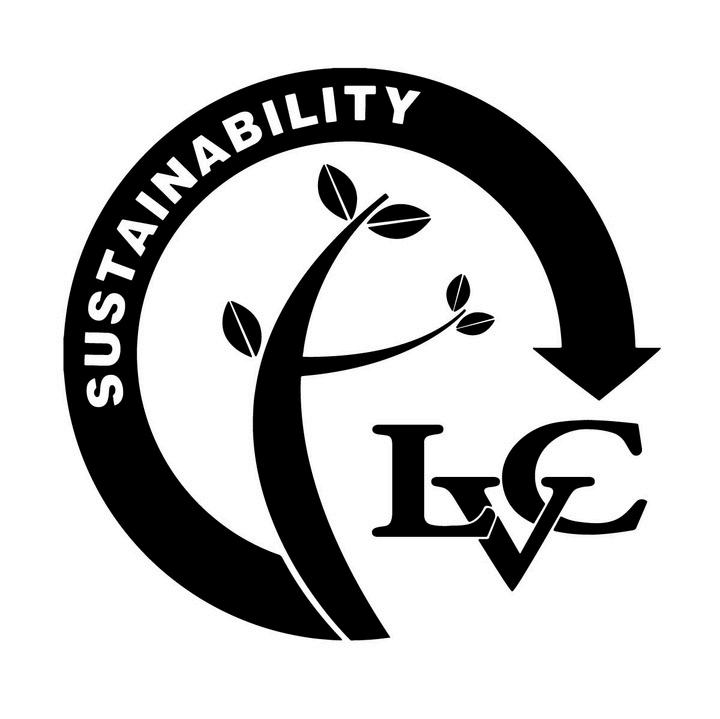



“Green living” can mean many things but fundamentally it recognizes something essential: All life is interconnected and together our choices affect our collective wellness for generations to come.
Green living isn't black and white, preachy, or politically one way or another because almost universally, everyone wants clean air, clean water, healthy food, and general wellbeing for ourselves, loved ones, communities, and the broader world.
Green living isn't like a light switch (off or on) but a process of awareness and development, Think of it more as a spectrum.
Experts on green living generally agree THE WRONG approach is to attempt to change all your life all at once, which can lead to frustration, failure, and even apathy.
Instead, in small ways, learn how you can move toward increased and ongoing sustainability and wellness through tweaks in your everyday life; things such as how/what you buy, eat, wear, travel, learn, communicate, play ... how you live
Many green living guides exist online, within scholarly databases, etc.
Below, we've aggregated what we consider to be among the best resources available. Explore, learn over time, test things out, and please let us know (greenlvc@lvc.edu) if you have something different we should share. We also are excited to learn about your individual green living development. Let us know!
First, try this Food Label Decoder from Consumer Reports, which helps you decide which products to purchase based on your various green living goals.

Next, explore these various sections, think about your own life, and consider where and how you might be able to help bring about positive change.

See how everyday behaviors impact your carbon footprint by using the Carbon Footprint Calculator! You might not know your electricity or heating bill, and that's OK. :) This fun calculator allows you to visualize how other things like transportation, shopping, and food choices affect the climate and also gives you tips for how we can each reduce our carbon emissions. As you fill out the calculator, you can see the bar graphs change (house, transportation, food, consumer habits). There is also a section at the end on behavior goals with carbon tons saved by implementing this behavior.
Did you know that as of 2022, 26% of the Amazon rainforest has been deforested to make room for animal agriculture? The food choices we make every day have a big impact on the future of the planet! Check out this interactive chart that allows you to select various foods and see their greenhouse gas emissions across the supply chain

Animal products (especially beef and dairy) are the highest emitters of greenhouse gases – and this mostly comes from land-use changes (deforestation), methane emissions, and the carbon involved in growing food to feed these animals. Transportation is only one very small aspect of total greenhouse gases. Eating local isn't always eco-friendly!
• What can I do? Try meatless Monday!
• Why it matters See how much water, carbon, trees, animals etc. you and your friends can save just by going meat-free one (or more!) day a week https://meatfreemondays.com/calculator/
About 25% of greenhouse gas emissions come from residential heating and cooling and electricity (that includes LVC dorms!).1 As of 2025, the total cost of utilities for LVC's campus (Electric, Gas, Water, Sewer) is over $1.6M! Saving energy saves money and reduces the size of required room and board fees.
• What can I do? Keep your windows closed during the winter. Never leave the room with the window open
• Why it matters Reducing greenhouse gas emissions helps reduce the many catastrophic effects of global warming. Saving energy also saves money.

Did you know only 0.75% of all water on earth is freshwater that we can drink?2 As the climate changes, many people across the globe are currently or forecasted to experience water scarcity 3 Let’s all do our part to conserve this precious resource LVC installed a new dishwasher in the Mund dining area that has saved over 1M gallons of water between September 2024 and end of March 2025! You too can help save water by making simple lifestyle tweaks.
Calculate your water footprint here!

While conserving water at the tap really adds up, most everyday water usage actually comes from food we choose to eat and the goods we buy!

The textile industry not only uses a shockingly large amount of water to produce garments, globally it's also a major cause of water pollution. From the agricultural runoff from cotton that causes algae blooms, to the use of toxic dyes, polluted wastewater from textile processing usually returns to rivers and streams untreated.4
• What can I do?
o Buy fewer clothes and only things you LOVE. Higher quality items last longer and you'll wear something more often if you absolutely love it.
o Find your signature style The fast fashion industry thrives on changing what's “in” and “out” so we buy new items each season Don't be fooled!
o Go thrifting. Not only does thrifting save carbon, water, and money, it's also really fun to find treasures that you cannot find anywhere else!
• Why it matters We can develop our personal style and help save the planet :)

Did you know it takes about 500 gallons of water to produce one hamburger? The production of food is a thirsty process! Animal products are highest on this list as water is needed to grow crops for animal feed, dilute the pesticides used on these crops, not to mention the water needed for the animals themselves. Water is also contaminated through agricultural runoff 5 Eating more plants and plant-based foods is an easy way to reduce your water use in a big way!
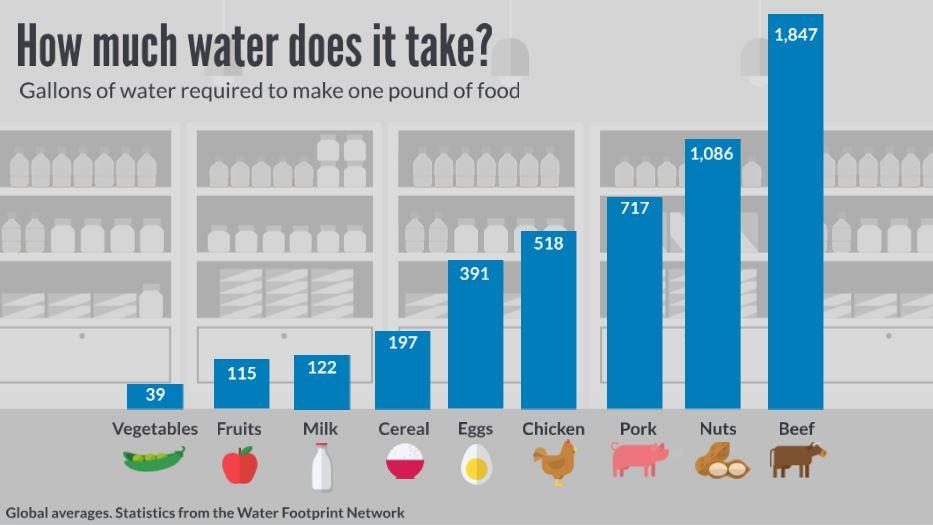
• What can I do? Try meatless Monday! See how much water, carbon, trees, animals etc. you and your friends can save just by going meat free one day a week.
• Why it matters With small tweaks to everyday consumption, including how frequently we eat meat, we can significantly save water, which again, increasingly is coming under threat.
ChatGPT and other forms of AI use a shockingly large amount of water through the huge amount of energy required in a search and the cooling of AI processing plants. A recent study showed that the generation of just 100 words through ChatGPT used over 17oz of water!6

• What can I do?
o Try using DuckDuckGo as your search engine instead of Google. You cannot easily avoid using AI when searching Google unless using a 3rd party "hack," etc. DuckDuckGo is great anyway and by default it isn't tracking you or collecting your data. Quick Tip: How to Turn off DuckDuckGo’s Artificial Intelligence (AI) Assist Feature for Search
o Avoid over-reliance on generative AI, which not only is prone to “hallucinations” (conveying inaccurate information), but can result in deskilling and significant environmental harm (among many challenges).
• Why it matters As many companies race to adopt generative AI, it's becoming woven into many everyday transactions often without consumer understanding of the implications. Previously “innocent” actions, such as performing a Google Search, now involve significant environmental effects. Simple changes, such as using DuckDuckGo for internet searches, and not over-relying on generative AI to do your thinking and writing for you, can help environmental preservation and help you to continue to retain and advance your communication and cognitive abilities.
Seemingly small things like running the shower ahead of time and a dripping faucet really add up with an LVC student population of ~1,700.

• What can I do?
o Laundry
§ Wash only full loads. This is less work on your part because it’s fewer loads to wash and saves water. The fewer loads you do, the less water you use.
§ Choose the “small load” option on your washer if you do a smaller load (i.e. sheets, delicate wear). This will use less water.
§ Wear clothes more than once. Sweatshirts, sweaters, jeans, pajamas, and sweatpants can be worn 2-5 times before they need to be washed. This saves water and energy.
o Showering and General Hygiene
§ Do not turn on the water more than 30 seconds before you get into the shower. Letting the shower run for 2 minutes before you get in sends 9 gallons of water down the drain!
§ Turn off the water while you wash your face, brush your teeth, etc. This can save up to four gallons of water each time!

While we have made great strides in saving paper by using electronic devices instead of print, the largest sources of paper waste in the US come from cardboard (packages) and compostable paper (toilet paper, paper towels and food containers).7
Toilet paper generally is an environmental problem and continues to result in massive deforestation. “In the time it takes you to brush your teeth tonight, Canada's boreal forest will lose three football fields of trees.”8 Instead of using toilet paper from trees, many companies already use perfectly suitable (and soft!) alternatives, made from materials such as recycled paper and bamboo.
• What can I do?
• Use sustainable toilet paper and avoid brands such as Costco's Kirkland Signature toilet paper, which is rapidly reducing forests on which our planet relies
• Pay your bills and receive bank statements online whenever possible. This will reduce your paper waste and eliminate the cost of postage and the chance your mail will get lost or stolen. In fact, some companies offer a small discount to do everything online since it saves them money as well.
• Purchase goods from vendors that use recycled packaging, are plasticfree, etc.
• Recycle! In PA, guidelines for what can be recycled varied by location. It’s worth the few minutes it takes to look up the rules in your area.
• LVC Recycles! Pay attention to signs on campus that tell us where to put used paper, plastic and metal containers, etc.


Sustainability professionals estimate that there are more than 400 voluntary sustainability standards worldwide 9 Trying to learn and remember all these certifications while you’re shopping just isn't possible and no company can achieve certification by all of them.
Instead, focus on the most trustworthy and widely recognized product certifications, some of which are described below. Sustainability can focus on different areas. That’s why we’ve organized them here into different sections Before you buy, look for the logos!
First of all, we'll address some general certifications or programs. These certifications usually focus on more than one aspect of the company's sustainability practices: B Corp

• What It Certifies: Sustainable companies (not products)
• Why It Matters: Certifies companies that balance purpose and profit
If you've been comparing sustainable brands, chances are you've encountered a few certified B Corps by now. The B Corp certification is one of the most prestigious not to mention difficult certifications to obtain in the sustainability space. Think of this sustainability certification as the cherry on top for a brand. To get certified, a company must meet high standards for social and environmental performance.
If you'd like to discover what makes B Corps different from traditional businesses, make sure to check out this Complete Guide to B Corps

Food Alliance Certification works to promote sustainability in the agriculture and food industry, ensure safe and fair working conditions, promote the humane treatment of animals, and careful steward of ecosystems.
• What It Certifies: Anything produced by a farm that is Food Alliance Certified (meat, produce, etc.)
• Why It Matters: It’s obvious :)
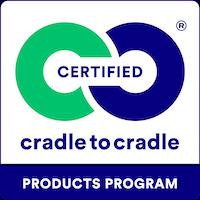
• What It Certifies: Apparel, building materials, furniture, personal care items, and cleaning supplies
• Why It Matters: Certifies products that are safe, circular, and responsibly made
While not as popular as the B Corp certification, the Cradle to Cradle certification is another widely recognized sustainability certification framework that demonstrates a product's sustainability and environmental responsibility. This sustainability certification assesses products across five categories: material health, product circularity, clean air and climate protection, water and soil stewardship, and social fairness. Simply put, this certification awards products that prioritize human health, support the circular economy, prevent climate change, protect ecosystems, and promote fair business practices.
Multiple certifications demonstrate a brand's commitment to supporting environmental and social causes. Here is one you've probably seen on various websites:
1% for the Planet

• What It Certifies: Brands (not products)
• Why It Matters: Certifies companies that contribute to environmental charities
1% for the Planet is a sustainability certification that is given to companies that donate at least 1% of their gross sales to approved environmental charities. When you see the 1% for the Planet certification logo on a brand's website or product, you can rest assured that a fraction of your money will go to meaningful causes addressing common environmental issues. It's important to note that this sustainability certification only certifies the company’s philanthropic efforts, which does not necessarily mean that a company or its products are eco-friendly.
The well-being of animals is an important consideration when looking for sustainable products. If you want to protect adorable, furry friends, opt for products with these trustworthy certifications:
Leaping Bunny

• What It Certifies: Personal care, cosmetic, and cleaning brands (not individual products)
• Why It Matters: Certifies that a company does not take part in animal testing
The Leaping Bunny certification is the most stringent and trusted standard for cruelty-free products. It ensures companies do not engage in animal testing at any stage of production. This means a certified company's final products, formulations, and ingredients are not tested on animals. Similarly, a certified company can't request others to conduct tests on their behalf or sell their products in countries where animal testing is required by law. Keep in mind that this certification doesn't certify that a brand is vegan.
Certified Vegan

• What It Certifies: Foods, drinks, mattresses, personal care, clothing, and household products
• Why It Matters: Certifies products that are vegan and have not been tested on animals
If you prefer products that are free from both animal testing and animal ingredients, this sustainability certification will help you recognize vegan and cruelty-free products. Certified Vegan by Vegan Action guarantees that products are 100% free of animal-derived ingredients or components, even when it comes to cross contamination. In other words, if a vegan product is produced in the same machinery as non-vegan products, companies must demonstrate that the surface is thoroughly cleaned in between batches. Similarly, certified products must not have animal testing involved at any stage of production either.
Responsible Wool Standard

• What It Certifies: Wool yarn, apparel made from wool
• Why It Matters: Certifies that sheep are treated humanely
Wool often is a favorite natural fiber for winter clothing, but not all wool is harvested in a way that prioritizes an animal's well-being. Responsible Wool Standard sustainability certification guarantees that wool comes from farms that treat animals with respect, have good environmental management practices, and adhere to the Five Freedoms of animal welfare.
One of the problems with the fashion industry is that many brands are creating 'trendy' clothing while destroying ecosystems along the way. And to make things worse, the final garments are often filled with toxic chemicals that disrupt our hormones. You can prevent this by supporting the slow fashion movement, preferring sustainable materials, and looking for these trustworthy certifications:
OEKO-TEX® STANDARD 100

• What It Certifies: Textiles and fabrics
• Why It Matters: Certifies that a product is free from over 100 harmful substances
The OEKO-TEX Standard 100 helps one identify chemical-free clothing. When a clothing item carries the OEKO-TEX Standard 100, it means that it's free from harmful substances that could affect human health or the environment. What makes this sustainability certification shine is that every component of a certified textile article including zippers, threads, and buttons must be tested for harmful substances to guarantee the article is completely harmless to human health. However, this certification framework is focused solely on the finished products, not the raw materials.
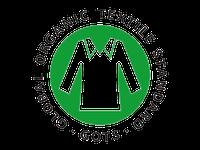
• What It Certifies: Clothing, home textiles, mattresses, fabrics, personal care products
• Why It Matters: Certifies products that contain 70% or more organic materials
While natural fibers are more popular than polyester among conscious consumers, they also come with an environmental cost. And that's something we can prevent with GOTS certified clothing. This stringent sustainability certification serves as a straightforward guide to identifying truly organic products, as only those with over 70% organic materials can get certified.
The GOTS certification monitors a product's entire supply chain, including processing, manufacturing, packaging, labeling, trading, and distribution. Similarly, certified products must adhere to strict guidelines regarding chemical use, raw materials, waste management, contamination risks, and more.
If you're thinking this certification scheme only applies to organic cotton, you'll be glad to hear it also covers other natural fibers like hemp, linen, and jute!

• What It Certifies: Clothes, textiles
• Why It Matters: Certifies products that are safe for the environment, workers, and customers
Another popular sustainability certification in the textile industry is the Bluesign label. This sustainability certification is awarded to products that meet strict safety and environmental standards throughout their supply chain, from raw materials to finished products. Unlike other certification schemes, the Bluesign® SYSTEM guarantees the safety of a product by removing harmful substances before they enter the supply chain.
We all deserve to enjoy a decent quality of life. Unfortunately, this is not the reality for many vulnerable workers around the globe. Let's explore some certifications to promote and guarantee equitable trade:
• What It Certifies: Clothing, textiles, food, tea, coffee
• Why It Matters: The certification ensures fairer terms of trade between farmers and buyers
The Fairtrade International certification bans child labor and protects workers' rights. It also promotes transparency and provides a framework for small producers to build thriving farms. The Fairtrade International certification also addresses other environmental criteria, such as responsible water management and minimal use of pesticides.

• What It Certifies: Clothing, food, beverages
• Why It Matters: Promotes safe working conditions and fair economic practices
Fair Trade Certified is another sustainability certification that helps us identify ethically-made products. Fair trade USA, the certifying body of the label, requires certified businesses to ensure safe working conditions, guarantee fair compensation, and protect the environment. This third-party verification also includes guidelines to protect waterways, reduce waste, minimize greenhouse gas emissions, and reduce the use of toxic chemicals.
If we aim to have a healthy lifestyle, long-term exposure to harmful substances can diminish our efforts. So, let's check some of the most trustworthy certifications for non-toxic products:
Made Safe

• What It Certifies: Apparel, bedding, personal care, childcare items
• Why It Matters: Certifies a product is free from over 6,500 harmful substances
Made Safe is a third-party verification that guarantees a certified product is free from over 6,500 known or probable carcinogens, endocrine disruptors, toxins, hazardous flame retardants, high-risk pesticides, toxic solvents, and harmful VOCs
EWG Verified

• What It Certifies: Skincare, personal care, hair care, cleaning products
• Why It Matters: Certifies products that meet the organization’s strict standards for health
EWG Verified mark. You might know the EWG (Environmental Working Group) for its Skin Deep database, a guide to safer personal care products. But this non-profit also certifies products that are free from any ingredients on EWG's "Unacceptable" list, which includes ingredients with health, ecotoxicity, and/or contamination concerns.
EPA Safer Choice

• What It Certifies: Cleaning, household, and personal care products
• Why It Matters: Certifies products that are safer for human health and the environment
EPA Safer Choice goes above and beyond to certify products that are made with safe ingredients without compromising on performance. When you find a product with this sustainability certification, you can feel confident it's safe for you, your family, pets, and the environment.
If you're on the hunt for new home appliances, look for products with this sustainability certification:
Energy Star

• What It Certifies: Home appliances, electronics, lighting, heating and cooling
• Why It Matters: Certifies products that use less energy than conventional options
The Energy Star label is given to products that meet strict energy efficiency criteria set by the US Environmental Protection Agency. This sustainability certification helps us identify home appliances and electronics that match or exceed the quality of conventional options while using less energy!
If you work in construction or want to promote healthier cities, it's worth learning about this certification:

• What It Certifies: Green buildings, communities, healthy cities
• Why It Matters: Evaluates the environmental performance of a building
The LEED certification is run by the U.S. Green Building Council (USGBC), the certifying body. This sustainability certification is a rating system that assigns different levels to certified green buildings: platinum, gold, silver, and certified LEED. The certification measures the environmental performance of new and existing buildings based on criteria such as materials, emissions, renewable energy, and more.
Deforestation is one of the most alarming environmental issues around the world. Globally, around 10 million hectares of forest are lost every year. An easy way to make sure our purchases aren't promoting mass deforestation is to look for the following sustainability certifications:
Forest Stewardship Council (FSC)

• What It Certifies: Forestry products such as paper and wood products
• Why It Matters: The certification promotes more sustainable forest management practices
You've probably seen the FSC logo on sustainable brands' paper and cardboard packaging. That's because the Forest Stewardship Council’s certification guarantees a product's forest-based materials come from responsibly managed forests. The Forest Stewardship Council also focuses on the restoration of forests, the protection of indigenous rights and endangered species, the promotion of workers' well-being, and the restriction of hazardous pesticides.
Rainforest Alliance Certified

• What It Certifies: Agricultural products, forestry products, tourism businesses
• Why It Matters: Promotes environmental responsibility, social equity, and economic viability
Have you ever encountered this cute little frog on a product's packaging? In case you didn't know, the Rainforest Alliance label guarantees the sustainable sourcing of raw materials. In fact, certified products must contain at least 90% of ingredients sourced from responsibly managed forests or farms. Additionally, the Rainforest Alliance certification seeks to improve farmers' lives and help them adapt to climate change while protecting their forests and supporting local communities.
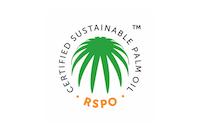
• What It Certifies: Palm oil used in food and personal care products
• Why It Matters: Certifies that palm oil is produced sustainably
The production of palm oil is often linked to large-scale deforestation and biodiversity loss. To prevent this, we can seek brands using sustainably sourced palm oil that's certified by the Roundtable on Sustainable Palm Oil. The RSPO monitors all parts of the supply chain, ensuring the production of palm oil didn't cause deforestation or affect local communities.
A certification to identify companies reducing their contribution to climate change: Climate Neutral

• What It Certifies: Brands in personal care, cleaning, apparel, technology, and more
• Why It Matters: Ensures that certified companies take responsibility for their carbon emissions
The Climate Neutral label certifies companies that have measured, reduced, and offset the carbon emissions from all their activities throughout the entire supply chain, from sourcing materials to the moment the product reaches your hands. Sustainably certified brands are committed to reducing their environmental impact by minimizing their emissions and removing carbon from the atmosphere.
1. United States Environmental Protection Agency. Sources of Greenhouse Gas Emissions (2025).
2. Sunayana Nath, R. K. S. & Y. N. 4- Influence of anthropocene climate change on biodiversity loss in different ecosystems. in Global Climate Change 63–78 (2021).
3. Ravinandrasana, V. P. , F. C. L. E. The first emergence of unprecedented global water scarcity in the Anthropocene. Nat Commun 16 (2025).
4. Mike Scott. Out Of Fashion - The Hidden Cost of Clothing Is a Water Pollution Crisis. Forbes (2020).
5. Abby Hornberger. Plant-Based Diets: Be Healthier while Reducing Your Water Footprint. https://cleanwater.org/2020/11/19/plant-based-diets-be-healthierwhile-reducing-your-water-footprint (2020).
6. Global Water Consumption by Generative Artificial Intelligence: Technical Report on the Water Impact of Data Centers. https://www.aidrinkswater.com/report.html (2023).
7. Anelia Milbrandt, J. Z. K. C. & A. B. Paper and cardboard waste in the United States: Geographic, market, and energy assessment. Waste Management Bulletin 2, 21–28 (2024).
8. Mary Katherine Moore. Costco is trading the boreal forest for toilet paper. Environment Montana: Forests (2021).
9. Cristina Solis. 20 Trusted Sustainability Certifications: Your Guide to EcoFriendly Shopping. https://orbasics.com/blogs/stories/sustainabilitycertifications (2024).